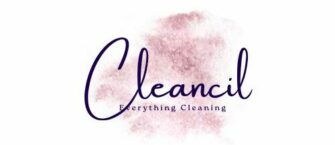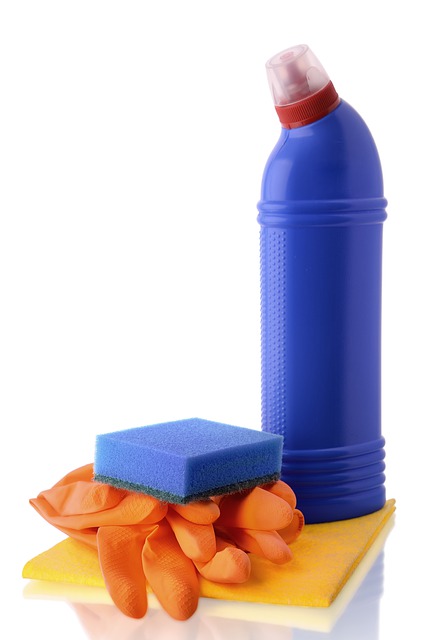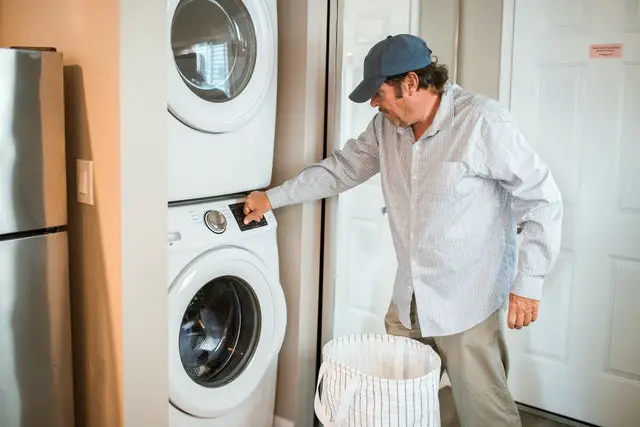Washing machines are laundry workhorses, and with time, unlike the way you brought them new, you’ll begin to notice changes in the way they smell (bad) and in the quality of clothes they turn out (which would be more on the unsatisfactory side).
When you’ve reached this point with your washer and begin to see these changes, you should know that it’s time for a deep cleanse.
And when it comes to disinfection, there are quite a number of products you can use to achieve that and the household product, bleach, is definitely among the list.
Bleach is recommended to be used in the washing machine for disinfection purposes. Bleach has a wide bactericidal range which means it can tackle a broad range of microorganisms. When using bleach in a washing machine, add one cup to the bottom of the empty basket then run a full wash cycle using the hottest setting of the machine. Follow up with a rinse cycle. If your washer has a bleach dispenser, you can use that instead of manually pouring the bleach into the washer drum.
There are two types of bleach that exist out there and both of them do not share equal cleansing and disinfection power.
It is therefore very important to know what kind of bleach to put inside the washing machine so you get the appropriate results.
Below we discuss more in details about bleach, its types, how to use it in the washing machine for disinfection, and where else aside the washer you can also use it for disinfection.
What is bleach? And what are the types?
Bleach is a chemical compound having brightening and disinfection properties.
Bleach brightens fabric or fibers through breaking or arrangements of chemical bonds and disinfects by virtue of it’s chemical reactivity against organic compounds.
The bactericidal capacity of bleach is impressively broad which is the reason why it is used in a wide area of application including home laundry disinfection. It can denature many species and varieties of microorganisms such as bacteria, viruses, fungi and algae.
Two types of laundry bleach exist which are the chlorine bleach and the non-chlorine bleach.The main constituents of chlorine bleach is sodium hypochlorite whereas that for the non-chlorine bleach is peroxide.
What does bleach do?
In laundry, bleach serves a heap number of uses. Chlorine bleach can be used to whiten or brighten clothes and the mechanism for this action is the breaking of chemical bonds of the substance that make up part of the molecule responsible for the stain.
This breakage results in the formation of a molecule that no longer absorbs visible light and as a result we perceive it as brightened or whitened, or a removal of stain.
Bleach also serves as a very good disinfectant because it reacts chemically with organic compounds to denature proteins.
Bleach’s ability to react with organic compounds in certain ways gives it the bactericidal properties it boasts of, and not just any level of bactericidal property, but a broad range one for that matter.
Aside from disinfection and brightening or whitening, bleach products are often packed with cleaning properties too and that’s the reason why they’re able to get rid of stains, dirt, and soiling on clothes. Popular brands of bleach products include Hypo, JIK, Clorox, etc.
How to disinfect your washer with bleach.
It is very important that you at least disinfect your washing machine once a month. The most you can do in a single month is once a week, and by keeping up to this practice, your washing machine will be able to consistently keep smell, grime and gunk at bay.
Sanitizing your washing machine is pretty easy, you can use bleach (which is most likely something you already have at hand), or you can use products that contain phenolic compounds, pine oil or even vinegar — for light washer problems.
To disinfect a washing machine, you first need to choose a bleach product, and you need to make sure that the bleach product is compatible with your type of washing machine. Many are not, and a typical example is domestos and drain cleaners used for fixing plumbing issues with drains and sinks.
Most washing machines have a bleach dispenser somewhere close to the detergent drawer.
You can pour the bleach into the dispenser and run a full wash cycle using the hottest settings of your machine. That should get your machine all sanitized and disinfected. Remember to always use the bleach dispenser for containing bleach and nothing else.
If your washing machine does not have a bleach dispenser, you can always add bleach manually to your washing machine. Pour 1 cup of bleach into the empty basket, and run the wash cycle using the hottest settings.
After you’re done, inspect the interior of the washing machine for any mold build up, grime, gunk and soiling. Wash these away using a tooth brush dipped in a solution of equal parts bleach and water.
After that, run a rinse cycle and your machine should feel and smell as good as new.
If you are using a high-efficiency washing machine and your washing machine is pretty soiled up and has too many grime and gunk buildup, then you might have to repeat this process all over again because the high-efficiency washing machine uses less water to clean, and because of that, the cleaning isn’t going to be as intense as what you’ll find in a regular washer.
How to sanitize your laundry with bleach
One of the most common uses for household bleach is to disinfect laundry. You can add bleach to the laundry to remove bacteria and other foreign microorganisms sitting on them, to whiten whites and brighten colored clothes, to remove stains from garments, and even to remove odor that have settled deep into fibers.
Before you begin any exercise with bleach however, you should first of all check your fabric care label to ensure that the type of bleach you’re using is allowed on that fabric. Not all fabrics can take bleach — chlorine bleach for that matter.
Chlorine bleach can actually discolor colored materials, destroy finishes like the flame retardant finishes you find on children clothing, destroy trims, and also wreak havoc on the integrity of delicate fibers like silk and wool.
This is mostly the reason why chlorine bleach is not advised to be used on some types of clothing and this is most certainly the reason why you should always check the fabric care label before you treat any garment with chlorine bleach.
The alternatives to chlorine bleach, as mentioned above, are non-chlorine bleach, and these, most at times, can be used on colored fabrics and sometimes even on delicate fabrics without causing damage or removing colors from them. That’s why they’re called color-fast bleaches.
But these bleaches typically do not do a very good job of disinfecting. For disinfection purposes, you’re better off using a chlorine bleach or any other proven substitutes like pine oil or phenolic compound disinfectants.
After you’ve done your primary assignment of ensuring that your fabric is safe to bleach, you can go ahead and apply bleach the way the manufacturer suggests and also for the specific type of cleaning you’re doing. Be it stain removal or whitening.
Most cleaning experts would advise that you do a little spot test to be 100% sure that the bleach is not going to harm the fabric, and that’s very good advice in my opinion. You can perform a spot test in an inconspicuous area of the fabric. Wait and see what happens, and then make a decision from there.
The common way to add chlorine bleach to your laundry in the washing machine is to add it at least 5 minutes after your washing has begun and this is typically what bleach dispensers do. The logic for this is to avoid the destruction of whiteners and enzymes present in the detergent.
If you’re using oxygen bleach, you can add it to the wash water before putting any clothes in there. They work with both hot and cold water just like chlorine bleaches.
Which other appliance can you use bleach to disinfect?
Aside from the washer, you can also disinfect your dishwasher using bleach. Before you jump straight to it however, check your manual and be sure there isn’t any warning against that.
Some dishwashers have stainless steel interiors that would react with bleach and corrode. If you have that type, your manufacturer should warn against the use of bleach in there.
If you have the plastic variant however, you may not see any warning, and that is because bleach does not react with plastic. So it’s safe to put it in there for disinfection.
Additionally, you can also use bleach to sanitize your refrigerator.
What else can you put in a washing machine to disinfect clothes?
Phenolic compound disinfectant
Phenolic compounds are great disinfectants you can use to sanitize your clothes. They are able to disinfect clothes by stopping the enzymatic process of microbes and as a result the cells die off and the organism eventually ceases to exist.
Many laundry products out there contain phenolic compounds in them so you can check for those that have the ingredient and use them in your laundry for disinfection.
Pine oil disinfectant
Pine oil disinfectant is also another great option to sanitize laundry. When you stumble upon cleaners and sanitizers containing pine oil disinfectant, you want to make sure the percentage you’re having there is at least 30% or more because anything less than that would be moderately effective against bacteria and other microorganisms like viruses, fungi and mold.
Final Thoughts
Bleach is more than recommended to be used in the washing machine to disinfect it. Bleach can act as a disinfectant as well as a cleanser. It’s tough on grime and gunk and ensures the alarming population of the bacteria thriving in your washing machine are destroyed. This means less smell, cleaner tub, fresher clothes and most importantly, good health for you.



